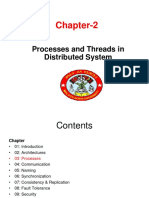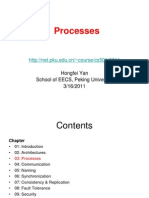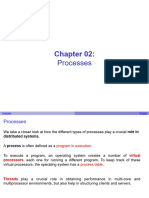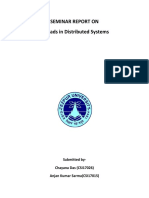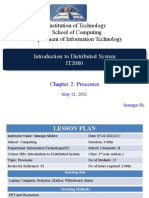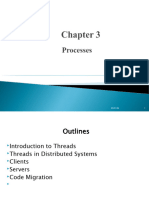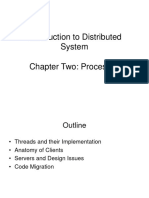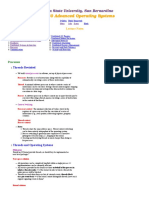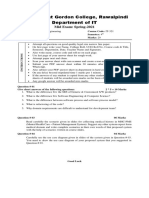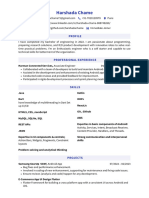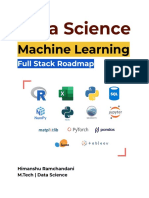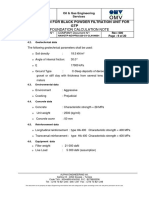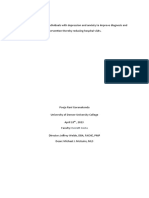0% found this document useful (0 votes)
18 views32 pagesCh3 Processes
Chapter 3 discusses processes and threads in distributed systems, highlighting the differences between processes and threads, and the benefits of multi-threading. It covers context switching, thread implementation approaches, and the importance of virtualization in cloud computing and code migration. The chapter concludes with various models for code migration and the challenges associated with migrating code in heterogeneous systems.
Uploaded by
asnake ketemaCopyright
© © All Rights Reserved
We take content rights seriously. If you suspect this is your content, claim it here.
Available Formats
Download as PDF, TXT or read online on Scribd
0% found this document useful (0 votes)
18 views32 pagesCh3 Processes
Chapter 3 discusses processes and threads in distributed systems, highlighting the differences between processes and threads, and the benefits of multi-threading. It covers context switching, thread implementation approaches, and the importance of virtualization in cloud computing and code migration. The chapter concludes with various models for code migration and the challenges associated with migrating code in heterogeneous systems.
Uploaded by
asnake ketemaCopyright
© © All Rights Reserved
We take content rights seriously. If you suspect this is your content, claim it here.
Available Formats
Download as PDF, TXT or read online on Scribd
/ 32





